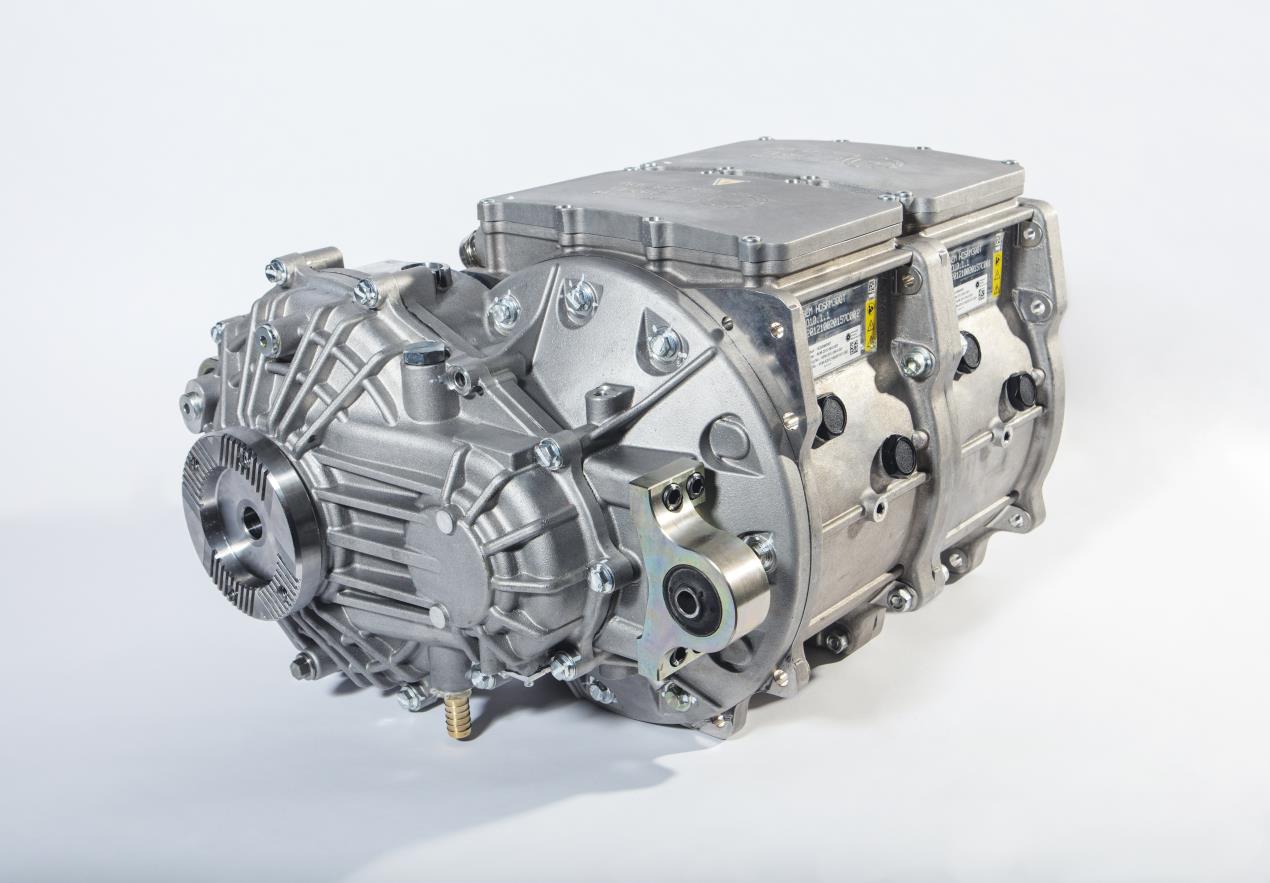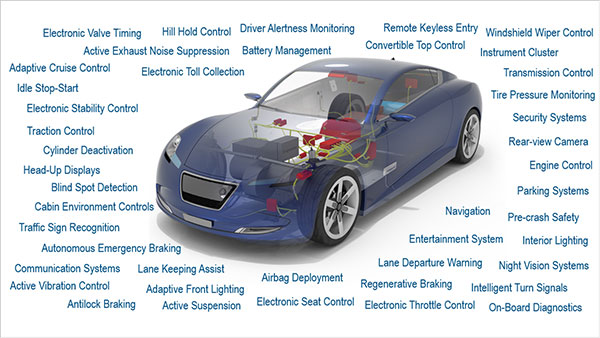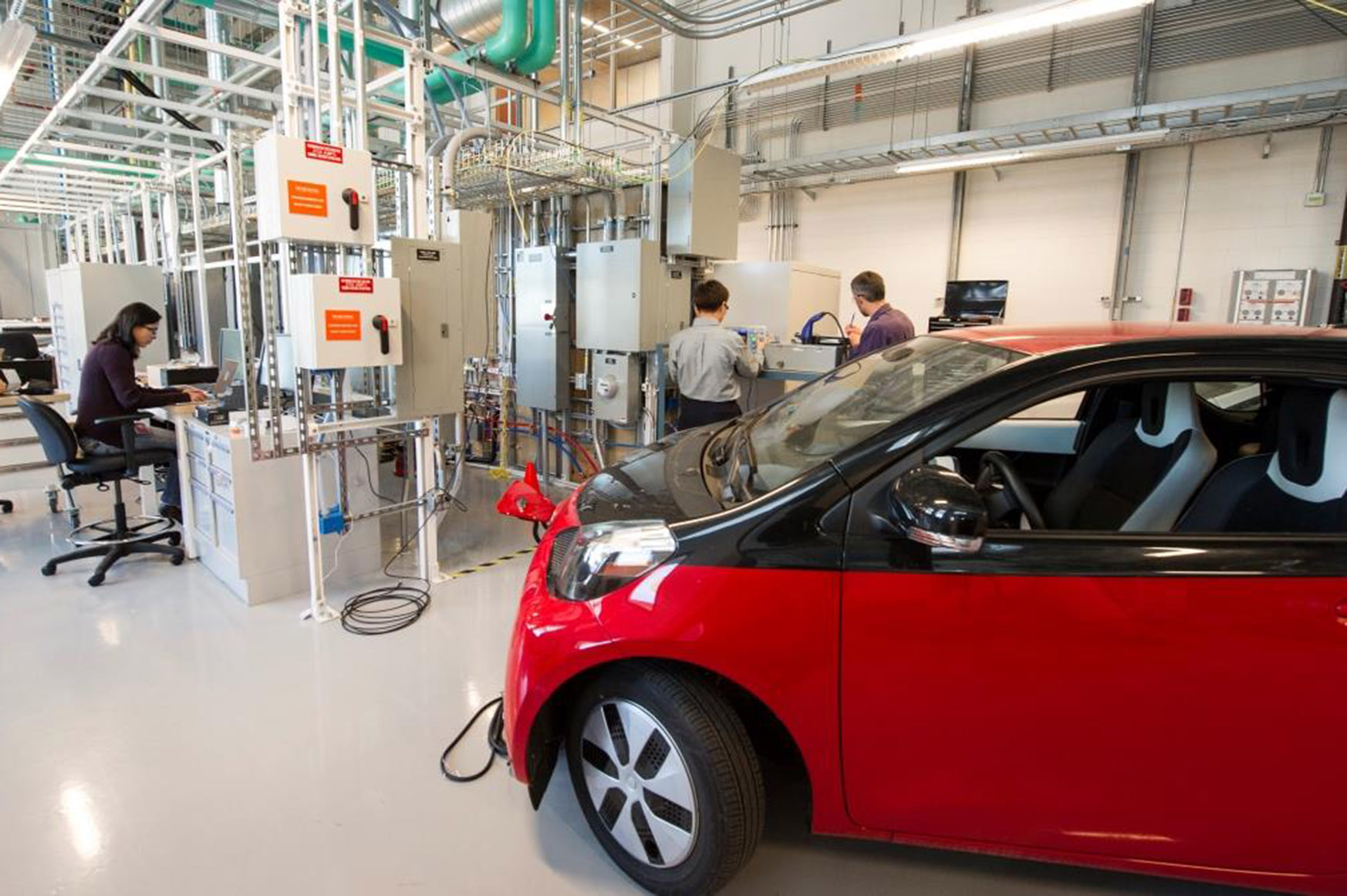Unlocking the Future of Electric Mobility: Key Challenges and Opportunities
The electric vehicle (EV) industry is at a critical juncture, with growing demand for sustainable transportation solutions driving innovation and investment. As governments and consumers increasingly prioritize environmental sustainability, the EV market is poised for rapid growth. However, this growth also presents significant challenges for original equipment manufacturers (OEMs) and suppliers, who must navigate complex regulatory landscapes, manage supply chain risks, and balance competing demands for performance, range, and affordability.
Efficient R&D management is crucial to staying competitive in this dynamic market. EV manufacturers must optimize their research and development processes to bring new technologies to market quickly, while also ensuring the reliability, safety, and quality of their products. This requires a deep understanding of the latest trends and advancements in electric motor design, battery technology, and systems engineering.
One of the key challenges facing EV manufacturers is the need to balance competing demands for performance, range, and affordability. As consumers increasingly prioritize sustainability, OEMs must develop EVs that offer comparable performance to internal combustion engine vehicles, while also meeting stringent emissions and safety standards. This requires significant investment in R&D, as well as collaboration with suppliers and partners to develop new technologies and manufacturing processes.
Despite these challenges, the EV industry also presents significant opportunities for innovation and growth. Advances in electric motor design, battery technology, and systems engineering are enabling the development of more efficient, sustainable, and cost-effective EVs. Additionally, the growing demand for EVs is driving investment in new manufacturing technologies, such as 3D printing and robotics, which are transforming the production process and enabling greater efficiency and flexibility.
As the EV industry continues to evolve, it is clear that efficient R&D management will be critical to success. By leveraging the latest trends and advancements in electric motor design, battery technology, and systems engineering, OEMs and suppliers can develop innovative, sustainable, and cost-effective EVs that meet the needs of consumers and regulators alike. As the industry continues to grow and mature, it will be exciting to see the new technologies and innovations that emerge, and how they shape the future of electric mobility.
How to Streamline Electric Motor Development: Best Practices for R&D Teams
Electric motor development is a critical component of electric vehicle (EV) research and development (R&D). As EV manufacturers strive to improve performance, efficiency, and range, they must also optimize their electric motor development processes to stay competitive. In this article, we will explore best practices for R&D teams to streamline electric motor development, including the use of simulation tools, collaborative design, and testing methodologies.
Simulation tools are a crucial component of modern electric motor development. By leveraging advanced simulation software, R&D teams can quickly and accurately test and optimize electric motor designs, reducing the need for physical prototypes and minimizing the risk of costly design errors. Additionally, simulation tools enable R&D teams to explore a wide range of design parameters and scenarios, allowing for the identification of optimal design solutions.
Collaborative design is another key strategy for streamlining electric motor development. By working closely with cross-functional teams, including design, engineering, and manufacturing, R&D teams can ensure that electric motor designs are optimized for performance, efficiency, and manufacturability. Collaborative design also enables R&D teams to identify and address potential design issues early in the development process, reducing the risk of costly rework and delays.
Testing methodologies are also critical to electric motor development. By leveraging advanced testing techniques, such as dynamometer testing and thermal testing, R&D teams can quickly and accurately evaluate electric motor performance and identify areas for improvement. Additionally, testing methodologies enable R&D teams to validate design simulations and ensure that electric motors meet performance and efficiency targets.
Finally, R&D teams can also leverage industry trends and best practices to streamline electric motor development. For example, the use of modular design architectures and standardized components can simplify the design and manufacturing process, while also enabling greater flexibility and customization. Additionally, the adoption of industry-wide standards and protocols can facilitate collaboration and knowledge-sharing across the supply chain.
By leveraging these best practices, R&D teams can streamline electric motor development and improve the performance, efficiency, and range of EVs. As the EV industry continues to evolve, it is clear that efficient electric motor development will be critical to success. By staying ahead of the curve and adopting the latest trends and technologies, R&D teams can drive innovation and growth in the EV industry.
The Rise of Advanced Materials in Electric Vehicle Manufacturing
Advanced materials are playing an increasingly important role in electric vehicle (EV) manufacturing, enabling the development of more efficient, sustainable, and high-performance EVs. Lithium-ion batteries, in particular, have been a key driver of EV innovation, offering improved energy density, power, and lifespan. However, other advanced materials, such as lightweight composites, advanced ceramics, and nanomaterials, are also being explored for their potential to enhance EV performance, range, and efficiency.
One of the most significant benefits of advanced materials in EV manufacturing is their potential to reduce weight and improve energy efficiency. Lightweight composites, such as carbon fiber and aluminum, can be used to reduce the weight of EV bodies and chassis, enabling improved acceleration, handling, and range. Additionally, advanced ceramics and nanomaterials can be used to improve the performance and lifespan of EV batteries, motors, and power electronics.
Another key benefit of advanced materials in EV manufacturing is their potential to improve safety and reliability. Advanced materials can be designed to meet specific safety and reliability requirements, such as crashworthiness, thermal management, and electromagnetic compatibility. Additionally, advanced materials can be used to develop more efficient and effective cooling systems, enabling improved thermal management and reduced risk of overheating.
The use of advanced materials in EV manufacturing also has significant implications for R&D management. As EV manufacturers seek to integrate advanced materials into their products, they must also develop new design, testing, and validation methodologies to ensure the reliability and performance of these materials. This requires close collaboration between R&D teams, suppliers, and manufacturing partners to ensure that advanced materials are properly integrated into EV designs and manufacturing processes.
Furthermore, the development and use of advanced materials in EV manufacturing is also driving innovation in other areas, such as recycling and end-of-life management. As EVs reach the end of their life, the recovery and recycling of advanced materials will become increasingly important, enabling the reduction of waste and the conservation of valuable resources.
In conclusion, advanced materials are playing a critical role in the development of more efficient, sustainable, and high-performance EVs. As EV manufacturers continue to innovate and integrate advanced materials into their products, they must also develop new R&D management strategies to ensure the reliability and performance of these materials. By leveraging advanced materials and innovative R&D management strategies, EV manufacturers can stay ahead of the curve and drive innovation in the EV industry.
Electrifying the Future: Trends in Electric Motor Design and Development
The electric motor is a critical component of electric vehicles (EVs), and its design and development are crucial to the overall performance, efficiency, and range of EVs. In recent years, there have been significant advancements in electric motor design, including the use of axial flux motors, transverse flux motors, and other innovative architectures. These advancements have the potential to improve the performance, efficiency, and range of EVs, and are driving innovation in the EV industry.
One of the most significant trends in electric motor design is the use of axial flux motors. Axial flux motors use a unique architecture that allows for higher power density and efficiency, making them ideal for EV applications. Additionally, axial flux motors can be designed to be more compact and lightweight, making them easier to integrate into EVs.
Another trend in electric motor design is the use of transverse flux motors. Transverse flux motors use a different architecture than traditional electric motors, and are designed to provide higher torque and efficiency. Transverse flux motors are also more compact and lightweight than traditional electric motors, making them ideal for EV applications.
In addition to these trends, there are also several other innovative architectures being explored in electric motor design. For example, some companies are developing electric motors that use advanced materials, such as nanomaterials and metamaterials, to improve performance and efficiency. Others are exploring the use of new manufacturing techniques, such as 3D printing, to create complex electric motor geometries.
The development of these innovative electric motor architectures has significant implications for EV R&D management. As EV manufacturers seek to integrate these new technologies into their products, they must also develop new design, testing, and validation methodologies to ensure the reliability and performance of these motors. This requires close collaboration between R&D teams, suppliers, and manufacturing partners to ensure that these new technologies are properly integrated into EV designs and manufacturing processes.
Furthermore, the development of these innovative electric motor architectures is also driving innovation in other areas, such as power electronics and battery management systems. As EV manufacturers seek to optimize the performance and efficiency of their electric motors, they must also develop new power electronics and battery management systems to support these motors. This requires a deep understanding of the complex interactions between electric motors, power electronics, and battery management systems, and the development of new design and testing methodologies to ensure the reliability and performance of these systems.
In conclusion, the trends in electric motor design and development are driving innovation in the EV industry, and have significant implications for EV R&D management. As EV manufacturers seek to integrate these new technologies into their products, they must also develop new design, testing, and validation methodologies to ensure the reliability and performance of these motors. By leveraging these innovative electric motor architectures, EV manufacturers can stay ahead of the curve and drive innovation in the EV industry.
Managing Complexity in Electric Vehicle R&D: The Role of Systems Engineering
The development of electric vehicles (EVs) is a complex process that involves the integration of multiple subsystems, including batteries, motors, power electronics, and control systems. As EVs become increasingly sophisticated, the complexity of their design and development is also increasing. To manage this complexity, EV manufacturers are turning to systems engineering, a discipline that focuses on the design, development, and integration of complex systems.
Systems engineering is a critical component of EV R&D, as it enables the integration of multiple subsystems into a cohesive whole. By using systems engineering principles and methodologies, EV manufacturers can ensure that their vehicles meet performance, safety, and regulatory requirements, while also minimizing costs and reducing development time.
One of the key benefits of systems engineering in EV R&D is its ability to manage complexity. By breaking down complex systems into smaller, more manageable components, systems engineers can identify and mitigate potential risks and issues early in the development process. This enables EV manufacturers to develop more reliable and efficient vehicles, while also reducing the risk of costly rework and delays.
Another benefit of systems engineering in EV R&D is its ability to facilitate collaboration and communication among different stakeholders. By using systems engineering principles and methodologies, EV manufacturers can ensure that all stakeholders, including engineers, designers, and manufacturers, are working together towards a common goal. This enables EV manufacturers to develop more effective and efficient vehicles, while also reducing the risk of miscommunication and errors.
In addition to managing complexity and facilitating collaboration, systems engineering also plays a critical role in ensuring the safety and reliability of EVs. By using systems engineering principles and methodologies, EV manufacturers can identify and mitigate potential safety risks, such as electrical shock, fire, and crashworthiness. This enables EV manufacturers to develop more safe and reliable vehicles, while also reducing the risk of costly recalls and litigation.
Finally, systems engineering is also critical to the development of autonomous vehicles, which are becoming increasingly popular in the EV industry. By using systems engineering principles and methodologies, EV manufacturers can ensure that their autonomous vehicles meet performance, safety, and regulatory requirements, while also minimizing costs and reducing development time.
In conclusion, systems engineering is a critical component of EV R&D, as it enables the integration of multiple subsystems into a cohesive whole. By using systems engineering principles and methodologies, EV manufacturers can manage complexity, facilitate collaboration and communication, ensure safety and reliability, and develop more effective and efficient vehicles.
Collaboration and Partnerships in Electric Vehicle R&D: Success Stories and Lessons Learned
The development of electric vehicles (EVs) is a complex process that requires the collaboration and partnership of multiple stakeholders, including industry leaders, academia, and government agencies. In recent years, there have been several successful collaborations and partnerships in EV R&D, which have led to the development of innovative technologies and products.
One example of a successful collaboration in EV R&D is the partnership between Tesla and Panasonic. In 2014, Tesla and Panasonic announced a partnership to develop and manufacture lithium-ion battery cells for Tesla’s EVs. The partnership has been highly successful, with Tesla’s battery technology being widely recognized as one of the best in the industry.
Another example of a successful collaboration in EV R&D is the partnership between General Motors and LG Chem. In 2010, General Motors and LG Chem announced a partnership to develop and manufacture lithium-ion battery cells for General Motors’ EVs. The partnership has been highly successful, with General Motors’ EVs being widely recognized as some of the best in the industry.
In addition to these partnerships, there have also been several successful collaborations between industry leaders and academia. For example, the University of California, Berkeley has partnered with several industry leaders, including Tesla and General Motors, to develop and test new EV technologies.
These collaborations and partnerships have been highly successful, and have led to the development of innovative technologies and products. However, they also present several challenges, including the need for effective communication and collaboration between multiple stakeholders.
To overcome these challenges, it is essential to establish clear goals and objectives, and to define the roles and responsibilities of each stakeholder. It is also essential to establish effective communication channels, and to ensure that all stakeholders are working together towards a common goal.
In conclusion, collaboration and partnerships are essential for the development of EVs, and have led to the development of innovative technologies and products. By establishing clear goals and objectives, defining roles and responsibilities, and establishing effective communication channels, stakeholders can work together to overcome the challenges of EV R&D and develop successful products.
Electric Vehicle R&D in the Age of Digitalization: Leveraging Big Data and Analytics
The electric vehicle (EV) industry is undergoing a significant transformation with the advent of digitalization. The use of big data and analytics is becoming increasingly important in EV R&D, enabling the development of more efficient, sustainable, and high-performance vehicles. In this article, we will explore the role of big data and analytics in EV R&D, including the use of simulation tools, data-driven design, and predictive maintenance.
Simulation tools are a critical component of EV R&D, enabling the simulation of complex systems and the optimization of vehicle performance. By leveraging big data and analytics, EV manufacturers can develop more accurate and detailed simulations, reducing the need for physical prototypes and minimizing the risk of costly design errors.
Data-driven design is another key application of big data and analytics in EV R&D. By analyzing large datasets, EV manufacturers can identify trends and patterns that inform the design of more efficient and sustainable vehicles. This includes the use of machine learning algorithms to optimize vehicle performance, reduce energy consumption, and improve safety.
Predictive maintenance is also a critical application of big data and analytics in EV R&D. By analyzing data from sensors and other sources, EV manufacturers can predict when maintenance is required, reducing downtime and improving overall vehicle reliability. This includes the use of advanced analytics and machine learning algorithms to identify potential issues before they occur.
The use of big data and analytics in EV R&D also has significant implications for R&D management. By leveraging big data and analytics, EV manufacturers can develop more efficient and effective R&D processes, reducing costs and improving overall vehicle performance. This includes the use of data-driven decision-making, enabling R&D teams to make more informed decisions and optimize vehicle design and development.
However, the use of big data and analytics in EV R&D also presents several challenges, including the need for advanced data analytics capabilities and the integration of multiple data sources. To overcome these challenges, EV manufacturers must invest in advanced data analytics capabilities, including machine learning and artificial intelligence.
In conclusion, the use of big data and analytics is becoming increasingly important in EV R&D, enabling the development of more efficient, sustainable, and high-performance vehicles. By leveraging simulation tools, data-driven design, and predictive maintenance, EV manufacturers can develop more effective and efficient R&D processes, reducing costs and improving overall vehicle performance.
Future-Proofing Electric Vehicle R&D: Strategies for Staying Ahead of the Curve
The electric vehicle (EV) industry is rapidly evolving, with new technologies and innovations emerging every day. To stay ahead of the curve, EV R&D teams must be proactive in monitoring industry trends, identifying emerging technologies, and developing a culture of innovation and continuous learning.
One key strategy for future-proofing EV R&D is to stay informed about the latest industry trends and developments. This includes monitoring industry publications, attending conferences and trade shows, and participating in online forums and discussions. By staying informed, EV R&D teams can identify emerging technologies and trends, and develop strategies for incorporating them into their R&D processes.
Another key strategy for future-proofing EV R&D is to develop a culture of innovation and continuous learning. This includes providing ongoing training and education for R&D team members, encouraging experimentation and risk-taking, and fostering a culture of collaboration and open communication. By developing a culture of innovation and continuous learning, EV R&D teams can stay ahead of the curve and develop new and innovative technologies.
In addition to these strategies, EV R&D teams can also future-proof their R&D processes by leveraging advanced technologies and tools. This includes the use of simulation tools, data analytics, and artificial intelligence to optimize R&D processes and improve overall efficiency. By leveraging these technologies, EV R&D teams can reduce costs, improve productivity, and develop more innovative and effective technologies.
Finally, EV R&D teams can also future-proof their R&D processes by developing partnerships and collaborations with other companies, universities, and research institutions. This includes participating in joint research projects, sharing knowledge and expertise, and collaborating on the development of new technologies. By developing these partnerships and collaborations, EV R&D teams can access new knowledge and expertise, and develop more innovative and effective technologies.
In conclusion, future-proofing EV R&D requires a proactive and strategic approach. By staying informed about industry trends, developing a culture of innovation and continuous learning, leveraging advanced technologies and tools, and developing partnerships and collaborations, EV R&D teams can stay ahead of the curve and develop new and innovative technologies.






